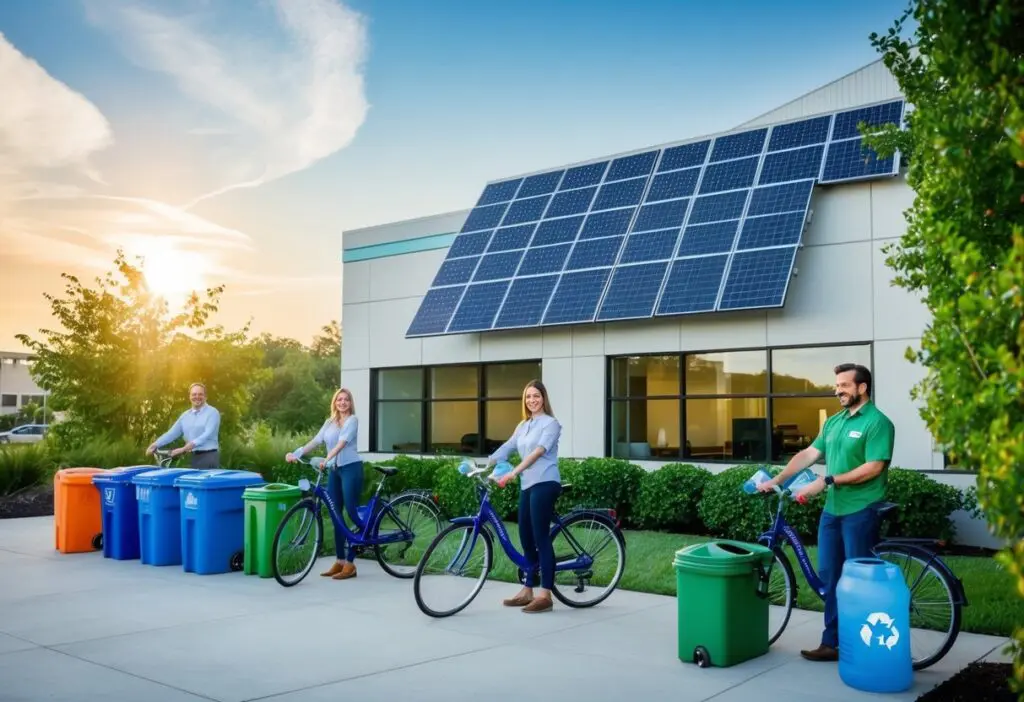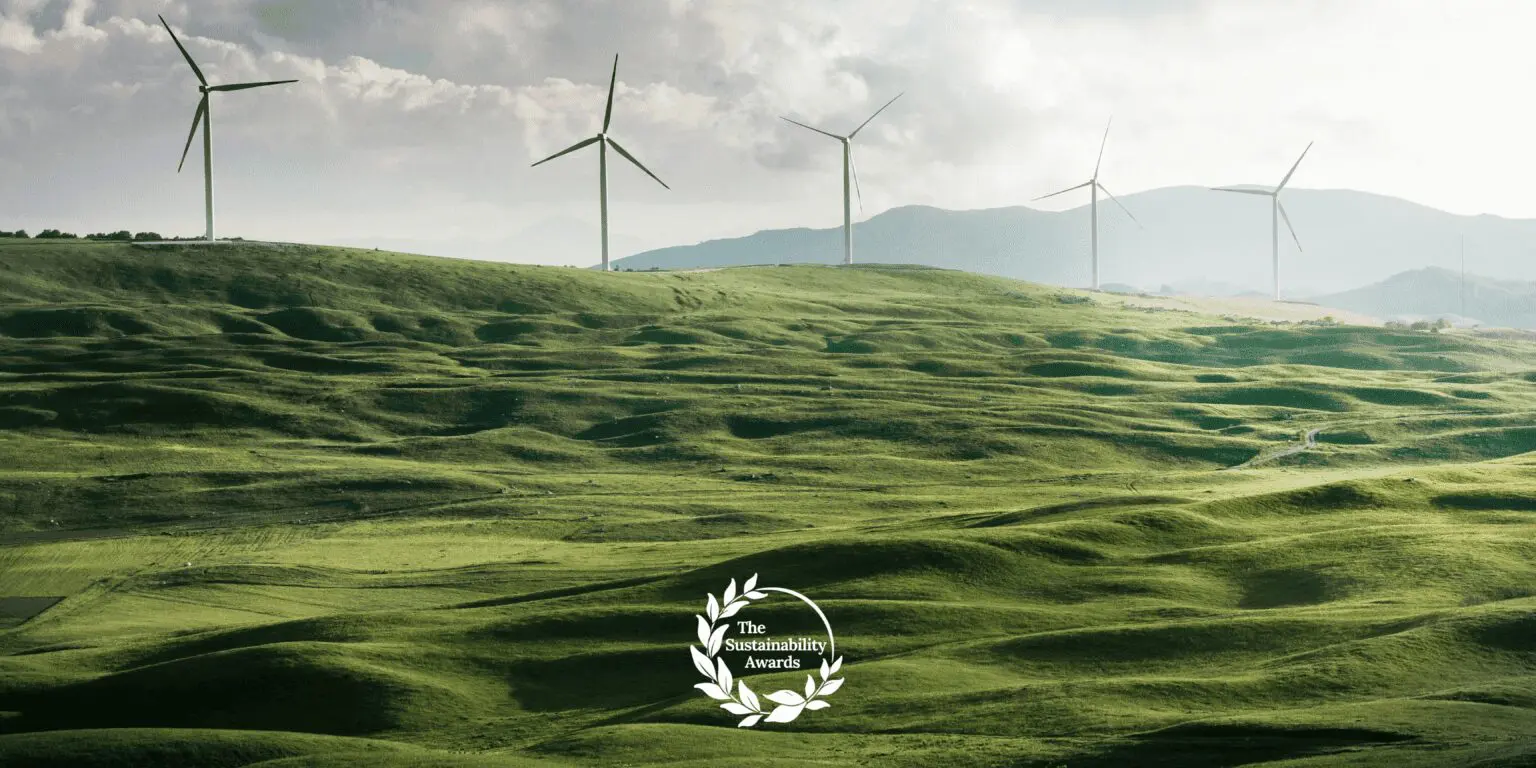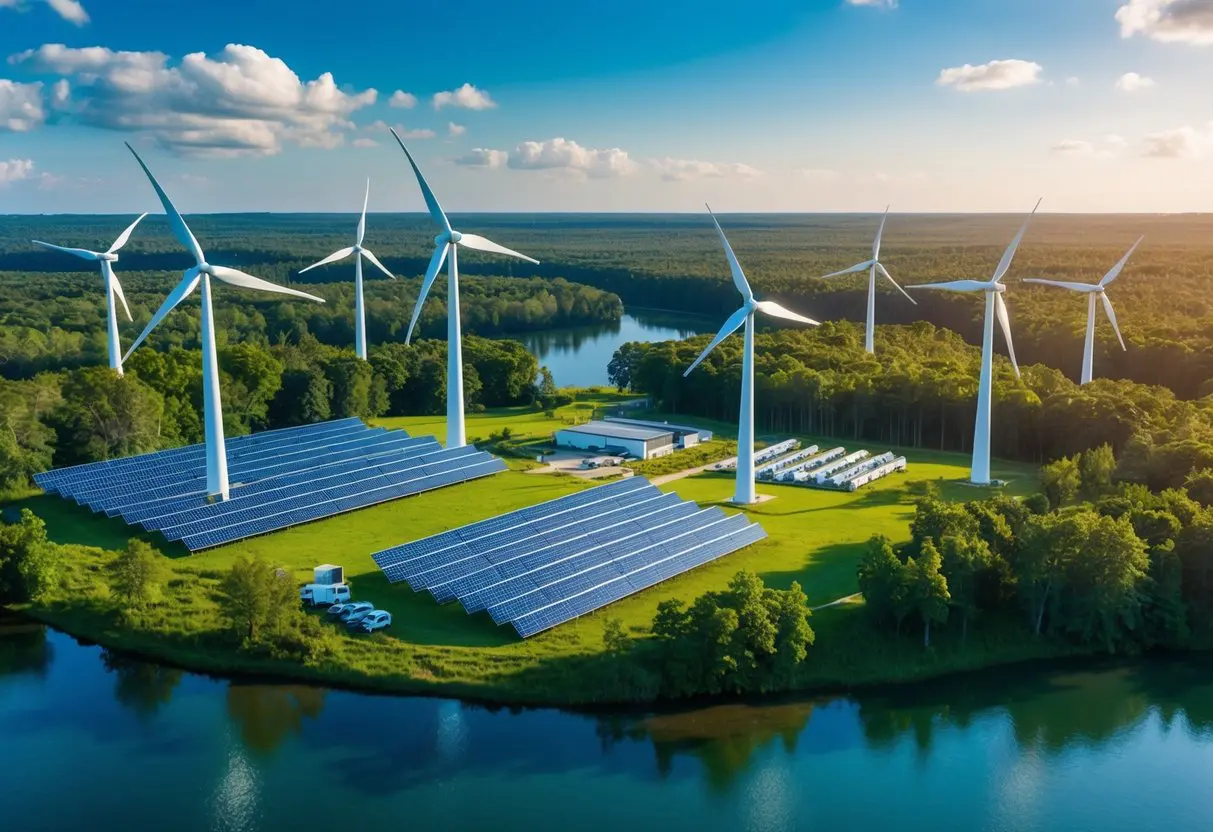Corporate sustainability has become a crucial aspect of modern business practices. Many companies see their impact on the environment and society. So, they implement ways to track their carbon footprint and social responsibility, and strengthen economic sustainability. These efforts not only benefit the planet but also contribute to long-term business success. Below, you’ll read some of our favourite Corporate Sustainability examples.

You can find inspiring examples of corporate sustainability across various industries. Including furniture giants to banks and clothing manufacturers. These companies are proving that profitability and environmental stewardship can go hand in hand. By adopting the triple bottom line approach, which considers people, planet, and profit, businesses are redefining success in the 21st century.
From IKEA’s efforts to achieve sustainability throughout its supply chain to Bank of America’s Environmental Business Initiative, corporations are setting ambitious goals and making significant strides towards a more sustainable future. These examples show that sustainability in business is not just a trend but a fundamental shift in how companies operate and create value.
Understanding Corporate Sustainability
Corporate sustainability encompasses strategies that balance economic growth with environmental and social responsibilities. It aims to create long-term value whilst minimising negative impacts on the planet and society.
Defining Sustainability in Business
Corporate sustainability refers to practices that support long-term business viability whilst benefiting the environment, society, and economy. It goes beyond short-term profits to consider the broader impacts of business operations.
Key elements include:
• Reducing environmental footprint
• Promoting social equity and wellbeing
• Ensuring ethical governance
• Driving innovation for sustainable solutions
Sustainability in business requires a holistic approach. Companies should integrate sustainable practices into all aspects of operations, from supply chains to product design.
The Evolution of Corporate Sustainability

Corporate sustainability has evolved over the past few decades. Initially, businesses focused primarily on compliance with environmental regulations.
In the 1990s, the concept expanded to include social responsibility. Companies began addressing issues like labour rights and community development.
Today, corporate sustainability is more comprehensive. It encompasses:
• Environmental stewardship • Social equity • Economic prosperity • Ethical governance
Modern approaches emphasise creating shared value. This means generating economic value in ways that also produce value for society.
Triple Bottom Line Explained
The Triple Bottom Line (TBL) is a framework for measuring corporate sustainability. It evaluates business performance across three dimensions:
- People (social impact)
- Planet (environmental impact)
- Profit (economic impact)
Social impact involves fair labour practices, community engagement, and product responsibility. Environmental impact covers resource use, emissions, and biodiversity protection. Economic impact includes financial performance, job creation, and innovation.
The TBL encourages you to consider the full cost of doing business. It helps balance short-term gains with long-term sustainability.
Measuring the Corporate Carbon Footprint
Your corporate carbon footprint is the total greenhouse gas emissions caused by your business. Measuring it is crucial for understanding and reducing your environmental impact.
Key steps in carbon footprint measurement:
- Define organisational boundaries
- Identify emission sources
- Collect activity data
- Apply emission factors
- Calculate total emissions
Emissions are typically categorised into three scopes:
• Scope 1: Direct emissions from owned or controlled sources
• Scope 2: Indirect emissions from purchased energy
• Scope 3: All other indirect emissions in the value chain
Regular measurement allows you to track progress and identify improvements.
Key Components of Sustainable Business Practices
Implementing sustainable practices in your business involves several critical elements. These components create a comprehensive approach to corporate sustainability, addressing environmental, social, and economic concerns.
Energy Efficiency and Renewable Energy
Enhancing energy efficiency is a cornerstone of sustainable business practices. You can start by conducting an energy audit to identify areas of high consumption. Replace outdated equipment with energy-efficient models and implement smart building systems to optimise heating, cooling, and lighting.
Renewable energy adoption is crucial for reducing your carbon footprint. Consider installing solar panels or wind turbines on-site. If that’s not feasible, explore green energy purchasing options from your local utility provider.
Educate your employees about energy conservation. Simple habits like turning off lights and computers when not in use can make a significant impact. Set energy reduction targets and track progress to motivate your team and demonstrate commitment to sustainability.
Waste Reduction and Recycling Programs
Effective waste management is essential for sustainable operations. Put in place a comprehensive recycling programme that includes paper, plastic, glass, and electronic waste. Provide clearly labelled bins and educate staff on proper sorting techniques.
Consider adopting a paperless office strategy by digitising documents and encouraging electronic communication. This not only reduces waste but also improves efficiency.
Explore opportunities for upcycling or repurposing materials within your business. For example, you might use old marketing materials as packaging filler or donate outdated computers to local schools or charities.
Partner with waste management companies that prioritise environmentally friendly disposal methods. Regularly review your waste streams to identify areas for further reduction.
Sustainable Supply Chain and Ethical Sourcing
Sustainable supply chain management involves evaluating and improving the impacts of your entire value chain. Start by mapping your supply chain to identify potential risk areas and opportunities for improvement.
Develop a supplier code of conduct that outlines your expectations for ethical and sustainable practices. This should cover areas such as labour rights, environmental protection, and anti-corruption measures.
Prioritise local suppliers where possible to reduce transportation emissions and support your community. Consider using suppliers who have obtained relevant sustainability certifications.
Implement a system for monitoring and auditing supplier performance. Regular assessments help ensure compliance and drive continuous improvement in your supply chain.
Employee Well-being and Social Responsibility
Promoting employee well-being is crucial for sustainable business success. Provide complete health and wellness programmes. This includes mental health support and work-life balance initiatives.
Provide opportunities for professional development and career growth. This not only benefits your employees but also enhances your company’s long-term success.
Implement diversity and inclusion policies to create a more equitable workplace. This can include targeted recruitment efforts, unconscious bias training, and mentorship programmes.
Engage in community outreach and philanthropy aligned with your business values. Consider offering paid volunteer time for employees to participate in local initiatives.
Foster a culture of sustainability by involving employees in your green initiatives. Create green teams to lead sustainability projects and recognise staff who contribute innovative ideas.
Strategies for Implementing Corporate Sustainability
Implementing effective corporate sustainability requires a multifaceted approach. Companies can use different strategies for environmental impact, social responsibility, and long-term economic health.
Developing a Sustainable Living Plan
A sustainable living plan serves as a roadmap for integrating sustainability into your business operations. Start by setting clear, measurable goals aligned with your company’s values and stakeholder expectations. Conduct a thorough assessment of your current practices to identify areas for improvement.
Engage employees at all levels to foster a culture of sustainability. Provide training and resources to help staff understand their role in achieving sustainability objectives. Regularly review and update your plan to ensure it remains relevant and effective.
Consider creating cross-functional teams to tackle specific sustainability challenges. This method can spark innovation and make sure different viewpoints are included in decision-making.
Adopting a Circular Economy Model
Embrace circular economy principles to minimise waste and maximise resource efficiency. Analyse your product lifecycle to identify opportunities for reuse, recycling, and regeneration. Design products with longevity and recyclability in mind.
Collaborate with suppliers and partners to create closed-loop systems. This might involve developing take-back programmes or finding innovative ways to repurpose waste materials. Invest in technologies that enable more efficient use of resources and reduce environmental impact.
Consider implementing leasing or service-based models where appropriate. This approach can extend product lifespans and create new revenue streams while reducing overall resource consumption.
Engaging in Environmental Stewardship
Take proactive steps to protect and restore the natural environment. Develop comprehensive strategies to reduce greenhouse gas emissions, conserve water, and protect biodiversity. Set science-based targets to ensure your efforts align with global climate goals.
Invest in renewable energy sources and energy-efficient technologies. Consider implementing green building practices for your facilities. Encourage sustainable transportation options for employees. Optimise your logistics networks to reduce emissions.
You can even take part in conservation and restoration projects in your local communities.
Incorporating Resilient Sustainability Strategies
Build resilience into your sustainability initiatives to ensure long-term success. Conduct regular risk assessments to identify potential environmental, social, and economic challenges. Develop contingency plans to address these risks and maintain business continuity.
Diversify your supply chains to reduce vulnerability to disruptions. Invest in research and development to stay ahead of evolving sustainability trends and regulations. Foster a culture of innovation that encourages continuous improvement in sustainability practices.
Leverage expertise and resources by forming partnerships with other organisations, including NGOs and academic institutions. This collaborative approach can enhance your sustainability efforts and drive industry-wide progress.
Examples of Corporate Sustainability in Action
Leading companies are taking bold steps to reduce their environmental impact and promote social responsibility. These initiatives range from innovative product designs to ambitious carbon reduction goals.
Patagonia’s Environmental and Social Initiatives
Patagonia has long been a pioneer in corporate sustainability. The outdoor clothing company uses recycled materials in many of its products, including recycled polyester from plastic bottles. They’ve also implemented a repair and reuse programme, encouraging customers to mend their gear rather than replace it.
Patagonia’s “1% for the Planet” initiative donates 1% of sales to environmental causes. The company has also taken a strong stance on fair labour practices, ensuring ethical working conditions throughout its supply chain.
In 2022, Patagonia’s founder made headlines by transferring ownership of the company to a trust and non-profit organisation. This bold move ensures that profits will be used to combat climate change and protect undeveloped land.
Ikea’s Commitment to Sustainability
IKEA aims to become fully circular and climate positive by 2030. The furniture giant has made significant strides in sustainable sourcing, with all its wood coming from more sustainable sources by 2020.
IKEA’s sustainability efforts include:
- Phasing out single-use plastic products
- Developing plant-based alternatives to popular food items
- Investing in renewable energy, including solar and wind farms
- Offering spare parts to extend product lifespans
- Implementing a buy-back scheme for used furniture
The company is also working on making its products more energy-efficient and easier to recycle or reuse at the end of their life.
Microsoft’s Carbon Negative Pledge
Microsoft has set an ambitious goal to become carbon negative by 2030. This means the tech giant aims to remove more carbon from the atmosphere than it emits. By 2050, Microsoft plans to remove all the carbon it has emitted since its founding in 1975.
To achieve this, Microsoft is:
- Shifting to 100% renewable energy for its operations
- Investing $1 billion in carbon reduction and removal technologies
- Implementing an internal carbon tax on all divisions
- Developing AI tools to help monitor and reduce emissions
The company is also working with suppliers to reduce their emissions, extending its impact beyond its direct operations.
Unilever’s Sustainable Living Brands
Unilever has made sustainability a core part of its business strategy. The company’s Sustainable Living Plan seeks to separate growth from its environmental effects. It also aims to boost positive social impact.
Key initiatives include:
- Sourcing 100% of agricultural raw materials sustainably
- Reducing packaging waste and increasing recyclability
- Improving health and wellbeing for over 1 billion people
- Enhancing livelihoods for millions through inclusive business
Unilever’s sustainable living brands are growing faster than the rest of the business, proving that sustainability can drive profitability.
Tesla’s Electric Vehicle Innovation
Tesla has revolutionised the automotive industry with its focus on electric vehicles (EVs). By making EVs desirable and practical, Tesla has accelerated the transition away from fossil fuel-powered transportation.
Tesla’s sustainability efforts extend beyond vehicle production:
- Solar roof tiles and energy storage solutions for homes
- Gigafactories powered by renewable energy
- Recycling programmes for batteries and other materials
- Over-the-air updates to improve vehicle efficiency
The company’s innovation in battery technology has implications beyond cars, potentially transforming energy storage for renewable power sources.
Challenges and Opportunities in Corporate Sustainability
Corporate sustainability presents both significant hurdles and promising prospects for businesses. Companies must navigate complex trade-offs whilst striving to reduce their environmental impact and maintain profitability.
Addressing Greenhouse Gas Emissions through Decarbonisation
Decarbonisation is a critical challenge for many firms. You may need to invest in cleaner technologies and processes to reduce your carbon footprint. This often requires substantial upfront costs but can lead to long-term savings.
Opportunities arise through innovation in energy-efficient systems and renewable energy adoption. You could explore options like:
- Solar panel installation
- Electric vehicle fleets
- Energy management software
These initiatives not only cut emissions but can also enhance your brand image and attract environmentally conscious customers.
Balancing Economic and Environmental Goals
Reconciling financial objectives with sustainability targets is a delicate act. Shareholders might push you to focus on quick profits instead of long-term environmental investments.
However, sustainable practices can drive economic benefits. By focusing on resource efficiency, you can reduce operational costs. For instance, implementing a circular economy model could minimise waste and create new revenue streams.
Collaboration with suppliers and customers on sustainability initiatives can strengthen relationships and open new market opportunities. You might consider:
- Developing eco-friendly products
- Partnering with green startups
- Engaging in sustainability-focused industry alliances
These strategies can position your company as a leader in corporate sustainability, potentially boosting your competitive advantage.
The Future of Corporate Sustainability
Corporate sustainability is evolving rapidly, with innovations in materials and technologies driving progress. Businesses are recognising sustainability as a key factor for growth and competitive advantage in the coming years.
Innovations in Sustainable Materials and Technologies
Green energy and sustainable materials are at the forefront of corporate sustainability efforts. You’ll see companies investing heavily in:
- Biodegradable packaging solutions
- Carbon-negative concrete alternatives
- Advanced recycling technologies
These innovations aim to reduce waste and lower carbon footprints. Artificial intelligence and blockchain are being integrated into supply chains to enhance transparency and traceability of sustainable materials.
Energy efficiency is improving through smart building technologies and IoT devices. You can expect to see more businesses adopting:
- Solar-powered offices
- Electric vehicle fleets
- Energy storage systems
The Role of Sustainability in Future Business Growth
Sustainability is becoming a key driver of business growth. You’ll notice companies integrating sustainable practices into their core strategies to:
- Attract environmentally conscious consumers
- Comply with stricter regulations
- Improve operational efficiency
Investors are increasingly favouring businesses with strong environmental, social, and governance (ESG) performance. You can anticipate more companies:
- Setting science-based emissions targets
- Implementing circular economy models
- Developing sustainable product lines
Collaboration across industries will accelerate sustainable innovation. You’ll see more partnerships between businesses, governments, and NGOs to tackle complex environmental challenges.
Promoting Social Sustainability and Social Impact
Companies are increasingly focusing on social sustainability and impact through responsible practices and community engagement. These efforts aim to create positive change whilst balancing business objectives with societal needs.
Corporate Social Responsibility and Community Engagement
Corporate social responsibility (CSR) integrates social and environmental concerns into business operations. Many firms now prioritise sustainability and social good in their strategies.
For instance, Unilever launched its Sustainable Living Plan in 2010 to reduce environmental impact and increase social benefits. This demonstrates how large corporations can lead in sustainability efforts.
Companies often engage with local communities through:
- Educational partnerships
- Volunteer programmes
- Charitable donations
- Support for local initiatives
These activities foster goodwill and create lasting positive impacts. Sport-related initiatives are particularly effective, promoting social relationships, diversity, and inclusion.
Maximising Social Impact through Business Activities
Businesses can amplify their social impact by aligning core activities with sustainability goals. This approach ensures that positive outcomes are integrated into daily operations.
Some effective strategies include:
- Sustainable sourcing: Ensuring fair treatment of workers and responsible resource management
- Inclusive hiring practices: Promoting diversity and equal opportunities in the workplace
- Ethical product development: Creating goods and services that address societal needs
Nestlé exemplifies this approach by focusing on responsible sourcing, nutrition research, and sustainable packaging. These efforts showcase how companies can contribute to social sustainability whilst maintaining profitability.
By embedding social impact into their business model, companies can create long-term value for both shareholders and society at large.
Driving Forces behind Sustainable Business Transformation
Corporate sustainability is being shaped by powerful external pressures and internal motivations. As climate change accelerates, businesses face mounting urgency to adapt their practices. Meanwhile, evolving regulations are compelling companies to embrace more sustainable approaches.
Climate Change as a Catalyst for Action
Climate change is pushing businesses to transform their operations. You can see this reflected in corporate procurement processes, which are now central to reducing carbon footprints. Companies are setting ambitious net-zero goals and rethinking their supply chains.
The 1.5°C global warming target requires rapid, deep cuts to greenhouse gas emissions by 2030. This stark reality is driving innovation in sustainable business practices. You’re witnessing an explosion of sustainable innovation as firms race to develop climate-friendly solutions.
Key areas of focus include:
- Renewable energy adoption
- Circular economy initiatives
- Sustainable product design
- Waste reduction strategies
Legislation and Policy Impacting Corporate Sustainability
Government policies are increasingly shaping the sustainability landscape. You’re seeing a wave of new regulations aimed at curbing emissions and promoting responsible business practices.
For instance:
- Carbon pricing schemes
- Extended producer responsibility laws
- Mandatory sustainability reporting
These policies are driving decision-making across markets and economies. You must navigate this complex regulatory environment to ensure compliance and maintain competitiveness.
Industry 4.0 technologies are playing a crucial role in this transition. They’re enabling more sustainable organisational processes through improved efficiency and data-driven decision-making. You can leverage these tools to track and reduce your environmental impact more effectively.
Frequently Asked Questions
Corporate sustainability involves integrating environmental and social considerations into business operations. Companies implement various strategies to reduce their ecological footprint, engage employees, and create long-term value for stakeholders.
How do businesses integrate sustainability into their operations?
Businesses integrate sustainability by assessing their environmental impact and implementing eco-friendly practices. This may include reducing energy consumption, optimising resource use, and minimising waste.
Companies often establish sustainability teams or appoint dedicated officers to oversee these efforts. They may also partner with environmental organisations for guidance and support.
What are the key components of a corporate sustainability policy?
A corporate sustainability policy typically includes commitments to environmental protection, social responsibility, and ethical governance. It outlines specific goals and targets for reducing carbon emissions, conserving resources, and promoting fair labour practices.
The policy may also address supply chain sustainability, product lifecycle management, and community engagement initiatives.
Can you provide examples of environmental sustainability initiatives in businesses?
Many businesses implement renewable energy projects, such as installing solar panels or wind turbines. Others focus on waste reduction and recycling programmes, or adopt circular economy principles to minimise resource consumption.
Some companies invest in sustainable transportation options for employees or redesign their products to use eco-friendly materials.
How do companies measure the success of their sustainability strategies?
Companies often use key performance indicators (KPIs) to measure sustainability success. These may include metrics like greenhouse gas emissions, energy and water consumption, and waste generation.
Many organisations also track social indicators such as employee satisfaction, diversity metrics, and community impact. Regular sustainability reports help companies assess progress and identify areas for improvement.
In what ways can employers promote sustainability within their workforce?
Employers can promote sustainability by offering training programmes on environmental best practices. They may implement green office initiatives, such as paperless workflows or energy-saving challenges.
Encouraging sustainable commuting options, like cycling or carpooling, can also engage employees. Some companies offer incentives for staff who contribute innovative sustainability ideas.
What constitutes the triple bottom line in corporate sustainability?
The triple bottom line encompasses three key areas: people, planet, and profit. It recognises that businesses should consider their social and environmental impact alongside financial performance.
This approach emphasises creating value for all stakeholders, including employees, communities, and the environment. Companies following this model strive to balance economic growth with social responsibility and ecological stewardship.
Sustainability Certificates: Tools for Eco-Conscious Businesses
Sustainability certifications have become increasingly important in today’s environmentally conscious world. These credentials demonstrate a…
Sustainability Jobs: Emerging Opportunities in Green Industries
Sustainability jobs are on the rise! As organisations continue to prioritise environmental and social responsibility,…
Sustainability Degree: Preparing Future Leaders for a Greener World
Considering a sustainability degree? It’s a smart choice for your future and the future of…



